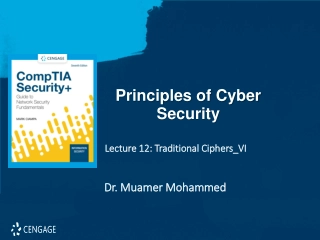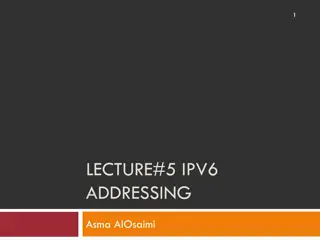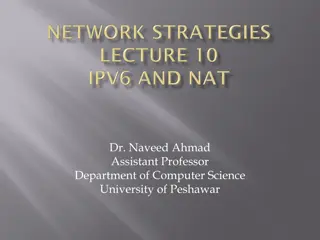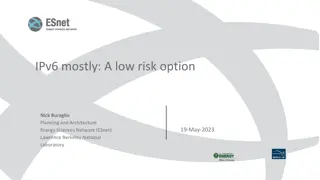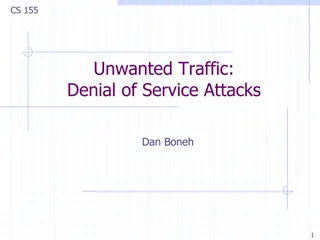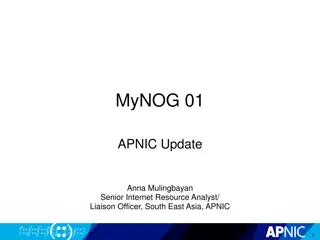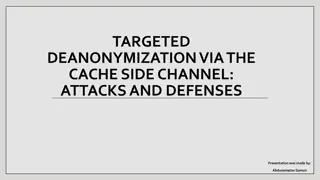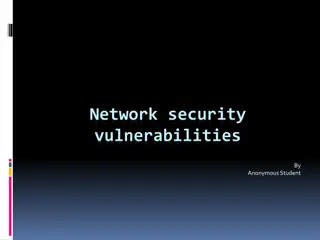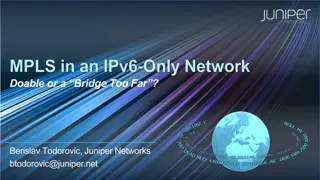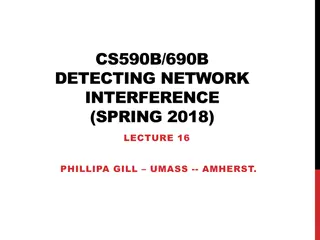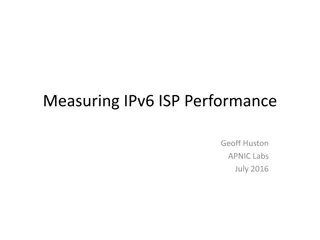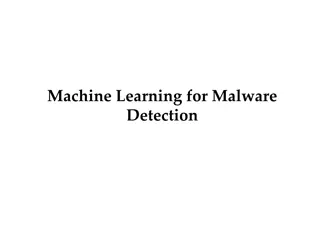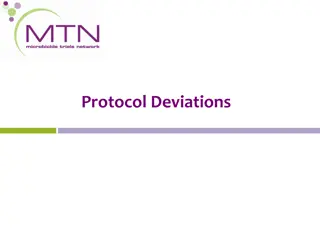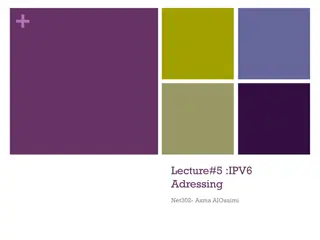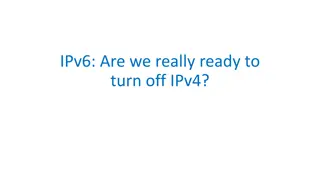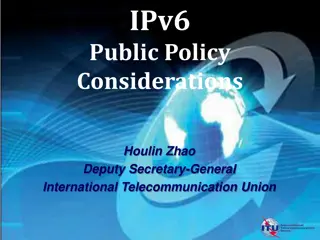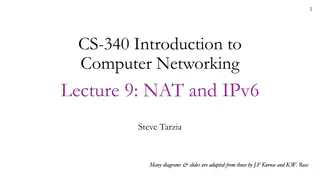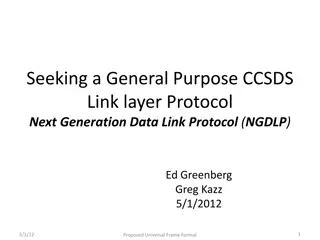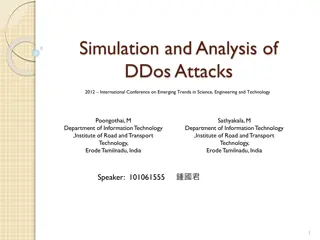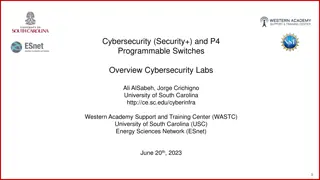Types Cyber Attacks: Cyber Security Training Workshop
Join our Cyber Security Training Workshop to learn about different types of cyber attacks such as social engineering attacks, DDoS attacks, malware attacks, MitM attacks, APTs, and password attacks. Enhance your knowledge and skills in cyber security.
15 views • 45 slides
Adversarial Machine Learning
Evasion attacks on black-box machine learning models, including query-based attacks, transfer-based attacks, and zero queries attacks. Explore various attack methods and their effectiveness against different defenses.
21 views • 60 slides
Understanding Malicious Attacks, Threats, and Vulnerabilities in IT Security
Malicious attacks, threats, and vulnerabilities in IT systems pose significant risks and damages. This chapter explores the types of attacks, tools used, security breaches, and measures to protect against cyber threats. Learn how security professionals safeguard organizations from malicious attacks
0 views • 24 slides
Principles of Cyber Security
Threat actors prioritize targeting networks to exploit vulnerabilities, leading to various attacks such as interception, DNS attacks, and MITM attacks. MITM attacks involve eavesdropping on communications or impersonating parties, with techniques like session replay to steal credentials. Implementin
0 views • 7 slides
Understanding Mobile Computing and TCP/IP Protocol Suite
Mobile computing is crucial for continuous internet connectivity regardless of physical location. The TCP/IP protocol suite, consisting of Transmission Control Protocol (TCP) and Internet Protocol (IP), forms the backbone of internet infrastructure. IP addressing and mobility challenges are addresse
2 views • 51 slides
Managing Covid-19 Cyber and Data Protection Risks
Exploring the risks and challenges related to cyber attacks and data protection amidst the Covid-19 pandemic. The agenda covers an overview of cyber-attacks, recent developments, protections against cyber attacks, data protection concerns during lockdown, compliance steps, and employee rights issues
1 views • 35 slides
Mitigation of DMA-based Rowhammer Attacks on ARM
Practical strategies are presented in "GuardION: Practical Mitigation of DMA-based Rowhammer Attacks on ARM" to defend against Rowhammer attacks on ARM architecture. The paper discusses Rowhammer defenses, RAMPAGE attacks on Android OS, and introduces GuardION as a lightweight mitigation approach. I
1 views • 48 slides
Understanding OSI Model and TCP/IP Protocol Suite in Computer Networking
This chapter explores the OSI model and TCP/IP protocol suite, delving into protocol layers, addressing mechanisms, and network components. It highlights the interface between layers, functions of each layer in the OSI model, and compares TCP/IP protocol suite layers with OSI model layers. The discu
0 views • 30 slides
Understanding IPv6 Addressing and Migration Techniques
IPv6 is designed as the successor to IPv4 due to the depletion of IPv4 address space. This lecture covers topics such as the need for IPv6, IPv4 and IPv6 coexistence techniques like dual-stack, tunneling, and translation, IPv6 addressing using the hexadecimal number system, and IPv6 address represen
0 views • 30 slides
Cybersecurity Challenges: Attacks on Web Applications and Cost of Security Breaches
In the realm of cybersecurity, attacks on web applications pose a significant threat with 78% of attacks targeting applications. The consequences of these attacks are immense, with projected costs reaching $6 trillion annually by 2021. Notable breaches in recent years highlight the urgency for robus
8 views • 23 slides
Evolution of Internet Protocol: From IPv4 to IPv6
The evolution of Internet Protocol (IP) from IPv4 to IPv6 has been crucial for adapting to new technologies and addressing specific networking challenges. IPv6 offers a 128-bit address space, improved header format, extensibility, and support for a wide range of services including video, voice, and
0 views • 23 slides
Leveraging IPv6-Mostly: A Low-Risk Option for Network Evolution
IPv6-mostly utilizes DHCP Option 108 to enable devices to operate in an IPv6-only mode, enhancing user experience while reducing risk. By leveraging modern technologies like 464XLAT and CLAT, the transition to IPv6 is seamless, with devices automatically adapting to the available network setup witho
0 views • 13 slides
Understanding EIGRP: A Comprehensive Overview
Enhanced Interior Gateway Routing Protocol (EIGRP) is a dynamic routing protocol providing various advantages to network administrators. It is a classless routing protocol supporting VLSM and is considered an Interior Gateway Protocol (IGP). EIGRP uses advanced distance vector routing and is known f
1 views • 5 slides
Understanding Denial-of-Service Attacks and Defense Strategies
Denial-of-Service attacks pose a serious threat where attackers flood networks with traffic, leading to system crashes and slowdowns. Explore the impact, expected results, and various categories of DoS attacks such as bandwidth attacks, protocol exceptions, and logic attacks. Learn how to defend aga
0 views • 61 slides
Understanding Network Denial of Service (DoS) Attacks
Network Denial of Service (DoS) attacks aim to disrupt services by overwhelming them with traffic. These attacks can occur at various layers of the network stack and exploit weaknesses to achieve their goal. Amplification attacks, such as the Smurf attack and DNS Amplification attack, can significan
2 views • 52 slides
Preventing Active Timing Attacks in Low-Latency Anonymous Communication
This research addresses the vulnerabilities of onion routing to timing attacks and proposes solutions to prevent active timing attacks, focusing on low-latency anonymous communication systems. Various problems related to timing attacks in onion routing are analyzed, including the role of adversaries
0 views • 52 slides
Understanding Control Hijacking Attacks in Software Systems
Control hijacking attacks, such as buffer overflows and format string vulnerabilities, allow attackers to take over a target machine by manipulating application control flow. Knowledge of C functions, system calls, CPU, and OS used is crucial for executing these attacks successfully. This summary pr
1 views • 55 slides
Strategies to Protect School Systems from Cyber Attacks
Schools are increasingly becoming targets of cyber attacks, making cybersecurity measures crucial. The article discusses the importance of responding to cyber attacks, creating incident response plans, and being vigilant against interception attacks. It outlines the steps to detect, document, and mi
0 views • 21 slides
Insights on IPv6 Reliability Measurements by Geoff Huston at APNIC
Geoff Huston from APNIC conducted IPv6 reliability measurements in May 2019. The study involved comparing IPv4 and IPv6 connections, analyzing TCP connection failures, and highlighting success rates in specific networks like 464XLAT and Reliance JIO in India.
0 views • 29 slides
IPv6 Security and Threats Workshop Summary
David Kelsey from STFC-RAL presented on IPv6 security and threats at the IPv6 workshop pre-GDB at CERN in June 2016. The workshop covered topics such as IPv6 protocol attacks, issues for site network security teams and sys admins, new features of IPv6, security pros and cons, immediate IPv6 concerns
1 views • 29 slides
Automated Signature Extraction for High Volume Attacks in Cybersecurity
This research delves into automated signature extraction for high-volume attacks in cybersecurity, specifically focusing on defending against Distributed Denial of Service (DDoS) attacks. The study discusses the challenges posed by sophisticated attackers using botnets and zero-day attacks, emphasiz
0 views • 37 slides
APNIC Internet Resource Analyst Update
Anna Mulingbayan, Senior Internet Resource Analyst and Liaison Officer at APNIC, provides updates on IP address and ASN delegation in the Asia-Pacific region. The content covers IPv4 exhaustion, delegation policies, last /8 delegations, and key policies implemented in 2011. Additionally, it discusse
0 views • 18 slides
Targeted Deanonymization via the Cache Side Channel: Attacks and Defenses
This presentation by Abdusamatov Somon explores targeted deanonymization through cache side-channel attacks, focusing on leaky resource attacks and cache-based side-channel attacks. It discusses the motivation behind these attacks, methods employed, potential defenses, and the evaluation of such att
0 views • 16 slides
Understanding Network Security Vulnerabilities and Attacks
Explore the world of network security vulnerabilities and attacks, including Denial-of-Service (DoS) and Distributed-Denial-of-Service (D-DoS), security flaws in the TCP/IP protocol suite, ICMP attacks, routing attacks, and TCP attacks. Learn about common security vulnerabilities such as address spo
0 views • 36 slides
Navigating IPv6 and MPLS Challenges for IPv4 Core Edge Transition
Explore the transition solutions and challenges for integrating IPv6 at the edge of an IPv4 core network, including 6PE, 6VPE, MPLS transport options, and the potential for IPv4 elimination. Discover the evolution toward IPv6 adoption in networking standards and the persistent role of MPLS in modern
0 views • 25 slides
Overview of vRouter Implementation in Openstack Neutron
Virtual router (vRouter) is a crucial component in network virtualization, with applications in cloud environments like Openstack Neutron. This article delves into the concept of vRouter, its importance in IPv6 implementations, and the utilization of VM-based vRouters. It also explores the current s
0 views • 12 slides
Understanding Network Interference in CS590B/690B Lecture
Delve into the realm of network interference through the CS590B/690B lecture with Phillipa Gill at UMass Amherst. Explore topics such as Internet routing, timing attacks, BGP hijacks, Tor network functionality, relay selection, collusion scenarios, use of guards, web site fingerprinting attacks, tra
0 views • 11 slides
Understanding IPv6 ISP Performance: A Detailed Analysis by Geoff Huston
This comprehensive study explores the reliability and speed of IPv6 connections, highlighting factors affecting connection failures. It compares datasets from 2011 and 2015/2016, revealing insights on Teredo, 6to4, and unicast address failures. The findings underscore the importance of addressing is
0 views • 37 slides
Machine Learning for Cybersecurity Challenges: Addressing Adversarial Attacks and Interpretable Models
In the realm of cybersecurity, the perpetual battle between security analysts and adversaries intensifies with the increasing complexity of cyber attacks. Machine learning (ML) is increasingly utilized to combat these challenges, but vulnerable to adversarial attacks. Investigating defenses against
0 views • 41 slides
Understanding Protocol Deviations in Clinical Trials
Protocol deviations are expected occurrences in clinical trials that may arise from site or participant actions. It is crucial for research teams to identify, report, and learn from these deviations to ensure the integrity and safety of the study. Mechanisms for identifying and reporting deviations,
0 views • 16 slides
IPv6 Addressing and Coexistence: Overview and Challenges
This lecture covers essential topics on IPv6 addressing, including IPv4 issues, the need for IPv6, address representation, types, testing, and verification. It explains how IPv6 is designed to overcome the limitations of IPv4, particularly the depletion of the IPv4 address space. The discussion also
0 views • 44 slides
Evolution of IPv6 Adoption in the Networking Industry
IPv6 adoption has reached 30% globally by the start of 2022. However, progress varies among different sectors, with enterprises lagging behind consumer markets. The slow transition is attributed to market saturation, legacy network issues, and cost considerations. Despite the benefits of IPv6 deploy
0 views • 6 slides
The State of IPv6 Transition: Are We Ready to Turn Off IPv4?
Despite decades of effort, the transition from IPv4 to IPv6 has been slow. Currently stuck in Phase 2, with only a small percentage of Internet users having IPv6 capabilities. New deployments lean towards IPv6 but the majority still rely on IPv4, with gradual migrations to dual-stack for legacy netw
1 views • 49 slides
Understanding IP Addresses and Their Classification
IP Addresses, short for Internet Protocol addresses, are unique identifiers assigned to devices on a network. They can be IPv4 or IPv6, with IPv4 having 32 bits and IPv6 being 128 bits. IP addresses are classified into classes A, B, and C, each with specific range and usage. Understanding IP address
0 views • 14 slides
IPv6 Public Policy Considerations - Addressing the Global IP Address Shortage
In light of the global shortage of IPv4 addresses, there is a pressing need for a fair policy for the allocation of remaining addresses. The rapid growth of the Internet has further increased demand for IP addresses, with IPv4 expected to run out soon. The deployment of IPv6 has become a critical is
0 views • 23 slides
Understanding NAT and IPv6 in Computer Networking
This lecture covers Network Address Translation (NAT) and IPv6 basics in computer networking. It explains how NAT helps in connecting multiple devices to the internet with limited IPv4 addresses, the concept of public and private IP addresses, and the transition to IPv6 for addressing constraints. V
1 views • 31 slides
Seeking a General-Purpose CCSDS Link Layer Protocol: Next-Generation Data Link Protocol (NGDLP)
This document discusses the proposed Universal Frame Format for a next-generation data link protocol, focusing on major questions about transfer frames, Protocol Link Transmission Unit (PLTU), and Universal Transfer Frame Structure. It explores topics such as frame formats, telemetry transfer frames
0 views • 24 slides
NT Awake Proning Protocol for Non-Intubated Patients
This protocol outlines the benefits and procedure for prone positioning in non-intubated patients experiencing mild to moderate hypoxemia. It highlights patient eligibility criteria, equipment required, and considerations for nursing care. The protocol emphasizes improving oxygenation by promoting a
0 views • 11 slides
Understanding DDoS Attacks: Simulation, Analysis & Defense
Delve into the world of Distributed Denial of Service (DDoS) attacks with this comprehensive study covering the architecture, advantages, bot installation phases, attack methods, defenses, and simulation. Learn about the detrimental impact of DDoS attacks on servers, their multi-tiered structure, an
0 views • 20 slides
Overview of DoS and DDoS Attacks in Cybersecurity
This content provides an in-depth overview of Denial of Service (DoS) and Distributed Denial of Service (DDoS) attacks in cybersecurity. It covers the types of attacks, including volumetric, reflected, and stealthy, along with detailed explanations and examples. Additionally, it discusses how DoS at
0 views • 8 slides



